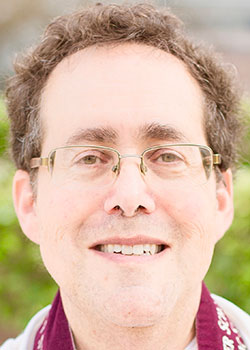Walk into any synagogue and you'll see them in the sanctuary. Generally, they're above the Aron (the Ark), or on a wall. Walk into many churches and you'll be greeted by the same sight. The two tablets of the Ten Commandments have become the eloquent symbols of religion, good and decency throughout the western world. Those few words have shaped nations and stirred souls. The simple yet clear instructions of how to live in relation to God and with each other have never been fully attained, let alone surpassed. Each generation reads them anew, and each has found something fresh and abiding in them to transmit to posterity. In fact, the Ten Commandments are so common that we risk taking them for granted. They are so familiar that we presume an intimacy in which basic questions are simply assumed.
But let's pause and ask one easy question. Given that the Ten Commandments are so terse, why did God command the use of two tablets instead of one? After all, in the Torah's record of revelation at Sinai, God seem concerned not only with the message, but with the medium too: "Thereupon the Lord said to me, 'Carve out two tablets of stone..." Omniscient even with PR, God knew that the shape of those tablets would attain a significance equal to the words recorded there. So, again, we can ask, why two? "It takes two to make our dreams come true," a song on the radio regularly reminds us. An American proverb holds that, "Two heads are better than one." Why? Perhaps Jewish law can help here.
According to the 'halakhah' (rabbinic law), a criminal conviction requires the testimony of at least two concurring witnesses. So significant is this ruling that pages and pages of Talmudic debate focus on the requirements of who may (or may not) testify, what testimony is admissible, and what the penalties are for false testimony. Running throughout this requirement of two witnesses is the assumption that any one person is fallible. Each of us has our own passions, our own foibles and our own biases. We filter what we see and what we are willing to understand through our unique personality and preferences, which can result in unusual insights, and can also result in distortions of reality. The easiest way to correct that distortion is to involve another human being, someone whose blind-spots differ from those of the first. Two is better that one because two can perceive reality better than one.
A second thought on twos: The classical Jewish mode of study is not that of a solitary scholar sitting alone, as we find in western academia. Instead, Jewish sages study in 'havruta,' in fellowship. Two or more Jews read the same text (out loud, of course!) and then discuss, probe, question and argue. As a result of their shared discourse and their voluble discussion, their knowledge of what they read is that much more solid, and their voices join in a debate and dialogue that is as ancient as Judaism itself. Perhaps for this reason, the sages of the Mishnah worked in zugot (pairs). Two is better that one because it allows for a dynamic of profundity and involvement.
Two is also the number of lovers. Love requires an exchange between two people. It multiplies in the give-and-take of two. And two is the number of twins. Midrash Devarim Rabbah records the same question. "Why two? The Rabbis say, "The Holy Blessing One said, 'Those [tablets] shall act as witnesses between Me and My children. They correspond to two witnesses, to two agents for groom and bride, to hattan (groom) and kallah (bride), to heaven and earth, to this world and the Coming World.' "
The two tablets of stone are like the two witnesses required by Jewish law. They can testify to our obedience to God's will or they can highlight our failure to rise to the level that Judaism demands. But they are also more than just legal watchdogs. Our sages are reminding us that good things come in pairs--like heaven and earth, like a boy and a girl. Two really is better than one.
Amen.
Shabbat Shalom!

